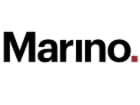CAMBRIDGE, Mass.--(BUSINESS WIRE)--Ironwood Pharmaceuticals, Inc. (Nasdaq:IRWD), a commercial biotechnology company, today provided an update on its second quarter 2018 results and recent business activities.
“Ironwood’s performance during the second quarter was driven by year-over-year topline growth of approximately 25%, continued strong LINZESS demand, initiation of Phase III programs for IW-3718 and linaclotide, and further enrollment in Phase II trials for praliciguat and olinciguat,” said Peter Hecht, chief executive officer of Ironwood. “In addition, during the second quarter we announced our intent to separate into two independent, publicly traded companies, each with focused missions and opportunities for significant growth. We have made substantial progress and remain on track to complete the separation in the first half of 2019.”
Dr. Hecht continued, “After initiating the lesinurad market tests in early 2018 and assessing the results in July, we have decided to terminate our licensing agreement with AstraZeneca in its entirety. This action is not taken lightly, but it is an important decision that we believe enables us to allocate capital to the highest return opportunities and drive growth. We are working to maintain appropriate availability of lesinurad for patients and physicians during the termination period.”
Second Quarter 2018 and Recent Highlights
Irritable Bowel Syndrome with Constipation (IBS-C) / Chronic Idiopathic Constipation (CIC)
- U.S. LINZESS. U.S. net sales, as reported by Ironwood’s U.S. collaboration partner Allergan plc, were $192 million in the second quarter of 2018, a 14% increase compared to the second quarter of 2017. Ironwood and Allergan share equally in brand collaboration profits.
- LINZESS commercial margin was 60% in the second quarter of 2018 compared to 52% in the second quarter of 2017.
- Net profit for the LINZESS U.S. brand collaboration, net of commercial and research and development (R&D) expenses, was $102 million in the second quarter of 2018, a 41% increase compared to the second quarter of 2017.
- Total LINZESS prescription volume in the second quarter of 2018 included approximately 32 million LINZESS capsules, an approximately 14% increase in capsules compared to the second quarter of 2017, per IQVIA.
- More than 800,000 total LINZESS prescriptions were filled in the second quarter of 2018, an approximately 7% increase compared to the second quarter of 2017, per IQVIA.
- Since the launch of LINZESS in December 2012, greater than 2 million unique patients have filled approximately 11 million prescriptions, per IQVIA.
- In May 2018, Ironwood and Allergan announced that the companies had reached an agreement with Aurobindo Pharma Ltd., resolving patent litigation brought in response to Aurobindo Pharma’s abbreviated new drug application (ANDA) seeking approval to market a generic version of LINZESS prior to the expiration of the companies’ applicable patents. The settlement with Aurobindo is the second patent infringement settlement the companies have reached with respect to LINZESS. Pursuant to the terms of the settlement, Ironwood and Allergan will grant Aurobindo Pharma a license to market a generic version of LINZESS in the U.S. beginning on August 5, 2030 (subject to U.S. FDA approval), unless certain limited circumstances, customary for settlement agreements of this nature, occur. As a result of the settlement, all Hatch-Waxman litigation between the companies and Aurobindo Pharma regarding LINZESS patents has been dismissed.
- Linaclotide Additional Abdominal Symptom Claims. In July 2018, Ironwood and Allergan initiated a single Phase IIIb clinical trial evaluating the efficacy and safety of linaclotide 290 mcg on multiple abdominal symptoms in addition to pain, including bloating and discomfort, in adult patients with IBS-C. As many as 13 million adults in the U.S. are estimated to suffer from IBS-C. According to survey data, as many as two thirds of IBS-C sufferers frequently experience symptoms such as abdominal bloating and discomfort, in addition to, or rather than, abdominal pain, which can lead to undertreatment. Topline data from this trial are expected in the second half of 2019.
- Linaclotide Delayed Release. Ironwood and Allergan plan to advance a linaclotide delayed release formulation into a Phase IIb clinical trial. Linaclotide delayed release has the potential to be a visceral, non-opioid, pain-relieving agent for patients suffering from all subtypes of IBS, including IBS-C, IBS with diarrhea and IBS-mixed. The companies recently reached agreement with the U.S. FDA regarding trial design and endpoints and are currently finalizing the Phase IIb protocol.
- LINZESS-Japan. Ironwood reported $8.8 million in sales of linaclotide active pharmaceutical ingredient (API) to its Japanese partner, Astellas Pharma Inc., in the second quarter of 2018.
Uncontrolled Gout
- DUZALLO® (lesinurad and allopurinol) and ZURAMPIC® (lesinurad). In January 2018, Ironwood commenced an initiative to evaluate the optimal mix of investments for its lesinurad franchise by exploring a more comprehensive marketing mix in select test markets. In July 2018, Ironwood obtained and reviewed the results from these test markets. Data from the test markets did not meet expectations. As a result, Ironwood delivered to AstraZeneca notice of termination of the U.S. lesinurad license agreement, expected to be effective 180 days from the notice. In connection with the analysis of the data and subsequent notice of termination of the agreement:
- Ironwood expects to save approximately $75 million to $100 million in full year 2019 operating expenses, primarily within SG&A.
- Ironwood plans to reduce its workforce by approximately 125 employees, primarily consisting of field-based sales employees. Ironwood estimates that it will incur aggregate charges in connection with the reduction in its workforce of approximately $10 million to $13 million for one-time employee severance and benefit costs, termination fees, and other contract-related costs, primarily in 2018, nearly all of which are expected to result in cash expenditures. In connection with the implementation of the lesinurad test markets, Ironwood previously reduced its workforce in January 2018 by approximately 60 field-based sales representatives.
- Ironwood reduced its projected revenue and net cash flow assumptions associated with its ZURAMPIC and DUZALLO intangible assets, as well as its contingent consideration liability. Accordingly, Ironwood anticipates recording a full intangible asset impairment of approximately $150 million and a gain on fair value remeasurement of contingent consideration of approximately $30 million during the third quarter 2018.
- Ironwood wrote down approximately $2.2 million related to lesinurad inventory and purchase commitments during the second quarter 2018. Approximately $1.8 million of such adjustment was recorded as write-down of lesinurad commercial supply to net realizable value and loss on non-cancelable purchase commitments, and approximately $0.4 million was recorded as selling, general, and administrative (SG&A) expenses in Ironwood’s condensed consolidated statement of operations.
Persistent Gastroesophageal Reflux Disease (GERD)
- IW-3718. Ironwood is currently enrolling patients in a Phase III program to evaluate IW-3718, its gastric retentive formulation of a bile acid sequestrant for the potential treatment of persistent GERD. Persistent GERD affects an estimated 10 million Americans who continue to suffer from heartburn and regurgitation despite receiving treatment with proton pump inhibitors (PPIs), the current standard of care.
- The Phase III program comprises two identical randomized, double-blind, placebo-controlled, multicenter Phase III trials that target enrolling approximately 1,320 total patients (660 in each trial) with persistent GERD who demonstrate evidence of pathological acid reflux. Eligible patients will continue to take PPIs and be randomized to placebo or IW-3718 1500 mg twice a day for eight weeks.
- The primary endpoint is an overall heartburn response, defined as a patient who experiences at least a 45% reduction from baseline in heartburn severity (an improvement determined to be clinically meaningful based on patient-reported outcomes in the Phase IIb trial) for at least four out of eight weeks, including at least one of the last two weeks. Secondary endpoints include change in weekly heartburn severity, change in weekly regurgitation frequency, the proportion of heartburn-free days and sleep disturbance.
Diabetic Nephropathy and Heart Failure with Preserved Ejection Fraction (HFpEF)
- Praliciguat (IW-1973). Ironwood is enrolling patients in Phase II trials to evaluate praliciguat, one of its lead soluble guanylate cyclase (sGC) stimulators, for the potential treatment of diabetic nephropathy and of HFpEF. Both diseases affect millions of patients around the world, including an estimated eight million Americans suffering from diabetic nephropathy and an estimated three million Americans suffering from HFpEF. Diabetic nephropathy is the leading cause of end-stage renal disease. There are few treatment options available to delay the steady decline of renal function leading to dialysis or kidney transplant. HFpEF is a highly symptomatic condition with high rates of morbidity and mortality, with no approved treatments available.
- Diabetic nephropathy. Ironwood expects to enroll approximately 150 patients into a randomized, double-blind, placebo-controlled, dose-ranging Phase II trial designed to evaluate the safety and efficacy of praliciguat in patients with diabetic nephropathy. Topline data from this study are expected in the second half of 2019.
- HFpEF. Ironwood continues to enroll patients into a randomized, double-blind, placebo-controlled Phase II trial designed to evaluate the safety and efficacy of praliciguat in patients with HFpEF. Ironwood modified the study protocol during the second quarter to focus on assessing the high dose arm and accelerate expected time to proof-of-concept. Enrollment of patients in the low and medium dose arms will cease. Estimated enrollment is now approximately 175 patients from an original projection of approximately 325 patients. Topline data from this study are expected in the second half of 2019.
Sickle Cell Disease and Achalasia
- Olinciguat (IW-1701). Ironwood is enrolling patients in Phase II trials to evaluate olinciguat, another of its lead clinical sGC stimulators, for the potential treatment of sickle cell disease and of achalasia. Sickle cell disease is a rare, debilitating genetic disorder that affects approximately 100,000 Americans. It causes red blood cells to become sickle-shaped leading to reduced normal red blood cell numbers and blockage of blood vessels in the body. Patients with sickle cell disease experience serious complications, including severe pain attacks, organ damage and infections. Achalasia is a rare disease with a prevalence rate of 10/100,000 Americans in which the lower esophagus does not relax normally, causing dysphagia (swallowing problems), regurgitation, and chest pain.
- Sickle Cell Disease. Ironwood expects to enroll approximately 80 patients into a multicenter, randomized, double-blind, placebo-controlled, dose-ranging Phase II trial of olinciguat in patients with sickle cell disease. The Phase II trial is designed to evaluate the safety, tolerability, pharmacokinetics and pharmacodynamics of olinciguat in these patients. In June 2018, the FDA granted Orphan Drug Designation to olinciguat for the treatment of patients with sickle cell disease.
- Achalasia. Ironwood recently closed enrollment of a randomized, double-blind, placebo-controlled, single-dose Phase IIa study of olinciguat in patients with achalasia. This proof-of-mechanism study is designed to evaluate the safety, tolerability, pharmacokinetics and pharmacodynamics of olinciguat in these patients. Data from this study are expected in 2018.
Global Collaborations and Partnerships
- Ironwood’s partner Astellas is commercializing LINZESS for adults with IBS-C in Japan. In September 2017, Astellas submitted a Supplemental New Drug Application with the Pharmaceuticals and Medical Devices Agency in Japan for approval to market linaclotide for the additional indication of chronic constipation.
- Ironwood expects the China Food and Drug Administration to complete its review of the marketing application for linaclotide in China for adult IBS-C patients in 2018. Ironwood is partnered with AstraZeneca AB for the development and commercialization of linaclotide in China.
Corporate and Financial Matters
- Intent to Separate
- In May 2018, Ironwood announced an intent to separate into two independent, publicly traded companies (Ironwood and “R&D Co.”). The separation is expected to be completed in the first half of 2019 and is anticipated to be tax-free to Ironwood shareholders.
- Following the separation, Ironwood anticipates being a profitable company leveraging its core expertise in GI diseases to advance a strong portfolio of in-market and development programs, including LINZESS, IW-3718 and linaclotide delayed release.
- R&D Co. expects to harness its pioneering work in cyclic guanosine monophosphate (cGMP) pharmacology to advance an innovative sGC pipeline focused on the treatment of serious and orphan diseases, led by Phase II clinical compounds praliciguat and olinciguat and three tissue-targeted sGC programs, including IW-6463 for severe central nervous system diseases and discovery programs targeting severe liver and lung diseases.
- Following completion of the separation, the plan is for the two companies to have separate, non-overlapping boards of directors and independent governance structures. It is also expected that there will be no ongoing funding between the two new companies following the separation, other than certain shorter-term transition and other services.
- In June 2018, Ironwood announced certain planned future management changes and determined the initial organizational designs of the two new businesses, including employees’ roles and responsibilities.
- In May 2018, Ironwood announced an intent to separate into two independent, publicly traded companies (Ironwood and “R&D Co.”). The separation is expected to be completed in the first half of 2019 and is anticipated to be tax-free to Ironwood shareholders.
- Total Revenues
- Total revenues were $81.1 million in the second quarter of 2018 compared to $65.1 million in the second quarter of 2017. Included in total revenues was $69.3 million associated with Ironwood’s share of the net profits from the sales of LINZESS in the U.S., $8.8 million in sales of linaclotide API to Astellas, $1.1 million in ZURAMPIC and DUZALLO product revenue, and $1.9 million in linaclotide royalties, co-promotion and other revenue.
- Operating Expenses
- Operating expenses were $121.0 million in the second quarter of 2018, compared to $106.1 million in the second quarter of 2017. Operating expenses in the second quarter of 2018 included $4.1 million in cost of revenues, $38.9 million in R&D expenses, $68.4 million in SG&A expenses, $3.5 million in acquired intangible assets amortization expenses, $2.4 million in restructuring expenses, $1.8 million in write-down of inventory to net realizable value and loss on non-cancellable purchase commitments, and a $1.9 million loss on fair value remeasurement of contingent consideration. Operating expenses in the second quarter of 2018 were higher year-over-year primarily due to costs associated with the company’s planned separation.
- Contingent consideration and amortization of acquired intangible assets relate to Ironwood’s license agreement with AstraZeneca for the exclusive U.S. rights to all products containing lesinurad.
- Other Expense
- Interest Expense. Net interest expense was $8.7 million in the second quarter of 2018, primarily in connection with the $150 million 8.375% Notes funded in January 2017 and the approximately $336 million convertible debt financing funded in June 2015. Interest expense recorded in the second quarter of 2018 includes $5.0 million in cash expense and $4.4 million in non-cash expense.
- Loss on Derivatives. Ironwood recorded a loss on derivatives related to the change in fair value of the convertible note hedges and note hedge warrants issued in connection with the convertible debt financing funded in June 2015. A loss on derivatives of $0.8 million was recorded in the second quarter of 2018.
- Net Loss
- GAAP net loss was $49.4 million, or $0.32 per share, in the second quarter of 2018, compared to a net loss of $44.2 million, or $0.30 per share, in the second quarter of 2017.
- Non-GAAP net loss was $43.1 million, or $0.28 per share, in the second quarter of 2018, compared to $42.2 million, or $0.28 per share, in the second quarter of 2017. Non-GAAP net loss excludes the impact of mark-to-market adjustments on the derivatives related to Ironwood’s convertible debt, as well as the amortization of acquired intangible assets and the fair value remeasurement of contingent consideration related to Ironwood’s U.S. lesinurad license. See Non-GAAP Financial Measures below.
- Cash Position
- Ironwood ended the second quarter of 2018 with approximately $181.2 million of cash, cash equivalents and available-for-sale securities. Ironwood used approximately $22.7 million of cash for operations during the second quarter of 2018.
- 2018 Financial Guidance
Ironwood continues to expect in 2018:
- SG&A expenses to be in the range of $230 million to $250 million;
- R&D expenses to be in the range of $160 million to $180 million;
- the combined Ironwood and Allergan total marketing and sales expenses for LINZESS to be in the range of $230 to $260 million; and,
- net interest expense to be less than $40 million.
Ironwood now expects in 2018:
- total restructuring costs to be in the range of $18 million to $21 million, which include the workforce reductions announced in January and June and the anticipated workforce reduction announced today (new guidance).
Ironwood will review its cash used from operations guidance as it gains more detailed financial information related to the lesinurad franchise termination. Ironwood no longer expects to be cash flow positive in the fourth quarter of 2018 due to restructuring costs.
Non-GAAP Financial Measures
The company presents non-GAAP net loss and non-GAAP net loss per share to exclude the impact of net gains and losses on the derivatives related to our convertible notes that are required to be marked-to-market, as well as the amortization of acquired intangible assets and the fair value remeasurement of contingent consideration associated with Ironwood’s U.S. license agreement with AstraZeneca for the exclusive rights to all products containing lesinurad. The derivative gains and losses may be highly variable, difficult to predict and of a size that could have a substantial impact on the company’s reported results of operations in any given period. The acquired intangible assets are valued as of the date of acquisition and are amortized over their estimated economic useful life, and management believes excluding the amortization of acquired intangible assets provides more consistency with the treatment of internally developed intangible assets for which research and development costs were previously expensed. The contingent consideration balance is remeasured each reporting period, and the resulting change in fair value impacts the company’s reported results of operations. The changes in the fair value remeasurement of contingent consideration do not correlate to the company’s actual cash payment obligations in the relevant period. Management believes this non-GAAP information is useful for investors, taken in conjunction with Ironwood’s GAAP financial statements, because it provides greater transparency and period-over-period comparability with respect to Ironwood’s operating performance. These measures are also used by management to assess the performance of the business. Investors should consider these non-GAAP measures only as a supplement to, not as a substitute for or as superior to, measures of financial performance prepared in accordance with GAAP. In addition, these non-GAAP financial measures are unlikely to be comparable with non-GAAP information provided by other companies. For a reconciliation of these non-GAAP financial measures to the most comparable GAAP measures, please refer to the table at the end of this press release.
About Ironwood Pharmaceuticals
Ironwood Pharmaceuticals (Nasdaq: IRWD) is a commercial biotechnology company focused on creating medicines that make a difference for patients, building value for our fellow shareholders, and empowering our passionate team. We are currently commercializing two innovative primary care products: linaclotide, the U.S. branded prescription market leader for adults with irritable bowel syndrome with constipation (IBS-C) or chronic idiopathic constipation (CIC), and lesinurad, which is approved to be taken with a xanthine oxidase inhibitor (XOI), or as a fixed-dose combination with allopurinol, for the treatment of hyperuricemia associated with gout. We are also advancing a pipeline of innovative product candidates in areas of significant unmet need, including persistent gastroesophageal reflux disease, diabetic nephropathy, heart failure with preserved ejection fraction, achalasia and sickle cell disease. Ironwood was founded in 1998 and is headquartered in Cambridge, Mass. For more information, please visit www.ironwoodpharma.com or www.twitter.com/ironwoodpharma; information that may be important to investors will be routinely posted in both these locations.
About LINZESS (linaclotide)
LINZESS® is the #1 prescribed brand for the treatment of adult patients with irritable bowel syndrome with constipation (IBS-C) and chronic idiopathic constipation (CIC), based on IQVIA data. Since its FDA approval in August of 2012 and subsequent launch in December 2012, greater than 2 million unique patients have filled approximately 11.1 million prescriptions for LINZESS, according to IQVIA.
LINZESS is a once-daily capsule that helps relieve the abdominal pain and constipation associated with IBS-C, as well as the constipation, infrequent stools, hard stools, straining, and incomplete evacuation associated with CIC. The recommended dose is 290 mcg for IBS-C patients and 145 mcg for CIC patients, with a 72 mcg dose approved for use in CIC depending on individual patient presentation or tolerability. LINZESS should be taken at least 30 minutes before the first meal of the day.
LINZESS is contraindicated in pediatric patients less than 6 years of age. The safety and effectiveness of LINZESS in pediatric patients less than 18 years of age have not been established. In neonatal mice, linaclotide increased fluid secretion as a consequence of GC-C agonism resulting in mortality within the first 24 hours due to dehydration. Due to increased intestinal expression of GC-C, patients less than 6 years of age may be more likely than patients 6 years of age and older to develop severe diarrhea and its potentially serious consequences. In adults with IBS-C or CIC treated with LINZESS, the most commonly reported adverse event was diarrhea.
LINZESS is not a laxative; it is the first medicine approved by the FDA in a class called guanylate cyclase-C (GC-C) agonists. LINZESS contains a peptide called linaclotide that activates the GC-C receptor in the intestine. Activation of GC-C is thought to result in increased intestinal fluid secretion and accelerated transit and a decrease in the activity of pain-sensing nerves in the intestine. The clinical relevance of the effect on pain fibers, which is based on nonclinical studies, has not been established.
In the United States, Ironwood and Allergan plc co-develop and co-commercialize LINZESS for the treatment of adults with IBS-C or CIC. In Europe, Allergan markets linaclotide under the brand name CONSTELLA® for the treatment of adults with moderate to severe IBS-C. In Japan, Ironwood's partner Astellas markets linaclotide under the brand name LINZESS for the treatment of adults with IBS-C. Ironwood also has partnered with AstraZeneca for development and commercialization of linaclotide in China, and with Allergan for development and commercialization of linaclotide in all other territories worldwide.
About ZURAMPIC (lesinurad) 200mg tablets
ZURAMPIC (lesinurad) works in combination with xanthine oxidase inhibitors (XOIs) to treat hyperuricemia associated with uncontrolled gout. ZURAMPIC is not recommended for the treatment of asymptomatic hyperuricemia and should not be used as monotherapy. XOIs reduce the production of uric acid; ZURAMPIC increases the excretion of uric acid. Together, the combination of ZURAMPIC and an XOI provides a dual mechanism of action that both decreases production and increases excretion of uric acid, thereby lowering serum uric acid (sUA) levels in patients who have not achieved target serum uric acid levels with XOI treatment alone. ZURAMPIC selectively inhibits the function of transporter proteins uric acid transporter 1 (URAT1) and organic anion transporter 4 (OAT4), involved in uric acid reabsorption in the kidney. The safety and efficacy of ZURAMPIC was established in three Phase III clinical trials that evaluated a once-daily dose of ZURAMPIC in combination with the XOI allopurinol or febuxostat compared to XOI alone. The boxed warning for ZURAMPIC states that acute renal failure has occurred with ZURAMPIC and was more common when ZURAMPIC was given alone and reinforces that ZURAMPIC should be used in combination with an XOI.
About DUZALLO (lesinurad and allopurinol)
DUZALLO (lesinurad and allopurinol) is a once-daily oral therapy that contains lesinurad 200 mg plus allopurinol 300 mg; it is also available in a lesinurad 200 mg plus allopurinol 200 mg dosage. DUZALLO is approved by the FDA as a once-daily oral treatment for hyperuricemia associated with gout in patients who have not achieved target serum uric acid (sUA) levels with a medically appropriate daily dose of allopurinol alone. DUZALLO is not recommended for the treatment of asymptomatic hyperuricemia. Allopurinol is an XOI whose action differs from that of uricosuric agents such as lesinurad. Allopurinol reduces the production of uric acid (UA); lesinurad increases renal excretion of UA by selectively inhibiting the action of URAT1, the UA transporter responsible for the majority of renal UA reabsorption. The dual-mechanism combination of DUZALLO can address both inefficient excretion and overproduction of UA, thereby lowering sUA levels.














